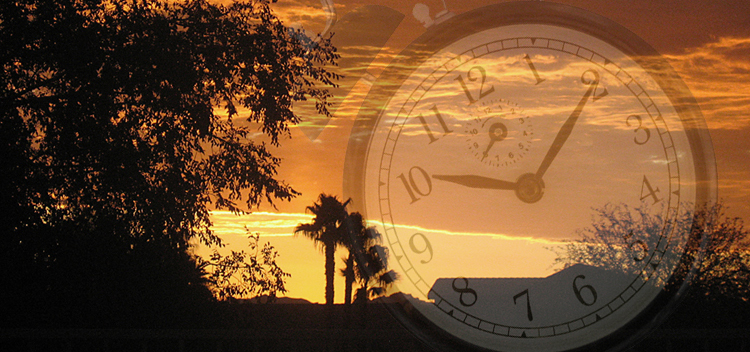I’m a big fan of not observing Daylight Savings Time. There seems to be no remaining logical grounds for doing so and according to the article below, posted on the ABC15 Arizona website, there are quite a few practical reasons why it’s a good idea not to. ~Bill
posted by Chris Kline, ABC15 Arizona
PHOENIX – It’s that time again — and even though there was buzz that Arizona might join the crowd this year, we won’t be moving to Daylight Saving Time…for now.
This upcoming Sunday marks the beginning of Daylight Saving Time for most of the United States.
But unlike almost everywhere else, Arizona doesn’t observe DST, and hasn’t done so for about the last 40 years.
A bill that would have changed this for Arizona was killed in January after an outpouring of opposition.
The bill – sponsored in part by Rep. Phil Lovas – would have moved the state to Mountain Daylight Time and was meant to address the business challenges of not changing time zones. It can be confusing, after all.
If that bill had passed, here’s what would have changed. Instead of sunrise at 5:30 a.m. during most of the summer, the sun would come up at 6:30 a.m. The mornings would feel cooler since we’d be rising an hour earlier. At the end of the day, the sun would set at 9 p.m. instead of 8 p.m. Because the heat sticks around even after sunset, you might argue this wouldn’t make much of a difference. However, meteorologists are quick to point out that the actual sun on your skin can make it feel hotter even if the temperature is the same after dark.
Winter sunrise and sunset times would remain the same.
So if Arizona isn’t going to change, would the rest of the country ever follow Arizona’s lead? According to CNN , we may have reached a tipping point to end the clock-changing madness.
A 2008 report from the U.S. Department of Energy said sticking with one time could save approximately 0.5% of electricity per day for the country . That’s enough power for 100,000 households over a year.
Another study shows that switching of clocks causes a 25% jump in heart attacks in the few days following the switch.
Arizona’s independence from this annual time change can cause a lot of confusion for residents and visitors alike.
It means the state is in the same time zone as Denver from November to March, but then falls behind Denver to Los Angeles time from March to November.
Why doesn’t Arizona change? It has a lot to do with the weather.
The history of daylight saving is tied to energy conservation. Switching to DST in the summer means more sunlight at night, which in turn means homes don’t have to turn on lights as early.
According to the U.S. Government , that leads to energy and fuel savings.
Over the course of the last 100 years, the United States (including Arizona) has gone on Daylight Saving time in both World War 1 and World War 2, but then gone off after the wars were over.
In 1973, a more permanent federal law was enacted to help with the oil shortages of that time. But Arizona asked for – and was eventually granted an exemption.
According to an Arizona Republic editorial from 1969, the reason was the state’s extreme heat. If Arizona were to observe Daylight Saving Time, the sun would stay out until 9 p.m. in the summer (instead of 8 p.m., like it does currently).
“[Data] clearly show that we must wait until about 9 p.m. DST to start any night-time activity such as drive-in movies, moonlight rides, convincing little children it’s bedtime, etc,” the editorial stated. “And it’s still hot as blazes!”
Another Arizona Republic editorial from 1968 stated, “Drive-in theaters, the parents of small children, the bars, the farmers and those who do business with California” were against Daylight Saving time while “power companies, the evening golfers, the late risers, and the people with business interests on the Eastern seaboard” were for it.
But don’t be fooled by Arizona’s DST stance. Not every corner of Arizona is exempt from Daylight Saving Time today.
The Navajo Indian Reservation follows DST, but the reservation stretches across four different states.
A 2009 Michigan State University published by the American Psychological Association study showed that DST has adverse effects on the American workplace.
“Following [the start and end of DST], employees slept 40 min less, had 5.7% more workplace injuries, and lost 67.6% more work days because of injuries than on non phase change days,” explained the study, which looked at mining injuries between 1983 and 2006 from the National Institute for Occupational Safety and Health.
Daylight Saving Time starts at 2 a.m. local time on Sunday, March 8, 2015. It ends on Sunday, November 1, 2015.
Copyright 2014 Scripps Media, Inc. All rights reserved. This material may not be published, broadcast, rewritten, or redistributed. – original article –


